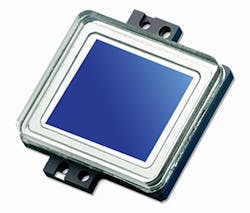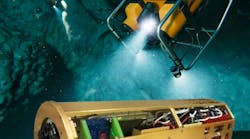Officials of the Army Contracting Command at Research Triangle Park, N.C., are announcing a $25 million order to Intevac to develop an advanced digital low light imaging module to enhance military operations in obscured visual conditions and at night.
On this contract Intevac will capitalize on the company's EBAPS technology, which company officials say is the core sensor technology of their extreme low-light products for the defense industry.
The Army previously has used Intevac's EBAPS technology on electro-optical sensors the company built for the Boeing AH-64 Apache attack helicopter.
Related: Army chooses low-light imaging cameras from Intevac Photonics for Apache attack helicopters
From Intevac the Army wants an advanced digital low light imaging module with capabilities similar to existing analog image tube technology. Of particular interest is the Intevac electron bombarded active pixel sensor technology, Army officials say.
The proprietary EBAPS technology enables Intevac experts to develop advanced digital sensors and systems for military night vision, weapon sights, surveillance, and precision targeting.
Intevac’s EBAPS technology is based on a III-V semiconductor photocathode in proximity focus with a high resolution, backside-thinned, CMOS chip anode, company officials say.
The electrons that the photocathode emits inject into the CMOS anode in the electron-bombarded mode. The CMOS anode collects the electrons, amplifies them, and reads them out to produce digital video directly out of the sensor.
Related: Army looks to Intevac to provide high-performance cameras for attack helicopter sensors
The EBAPS sensor offers quality night vision in a compact, lightweight, low-power, low-cost package by eliminating the complex components of traditional image-intensifier assemblies, Intevac officials say.
Intevac's EBAPS night-vision sensor technology works in the visible-light and near-infrared spectra, which are selectable by photocathode choice. The sensor's resolution, frame rate, and rate of power consumption also selectable by silicon sensor choice, company officials say.
The Army Contracting Command awarded the contract to Intevac sole-source because the company was the only responsible source for this technology, Army officials say.
On this contract Intevac should be finished in September 2020, and will do the work in various locations. For more information contact Intevac Photonics online at www.intevac.com, or the Army Contracting Command at www.acc.army.mil.



